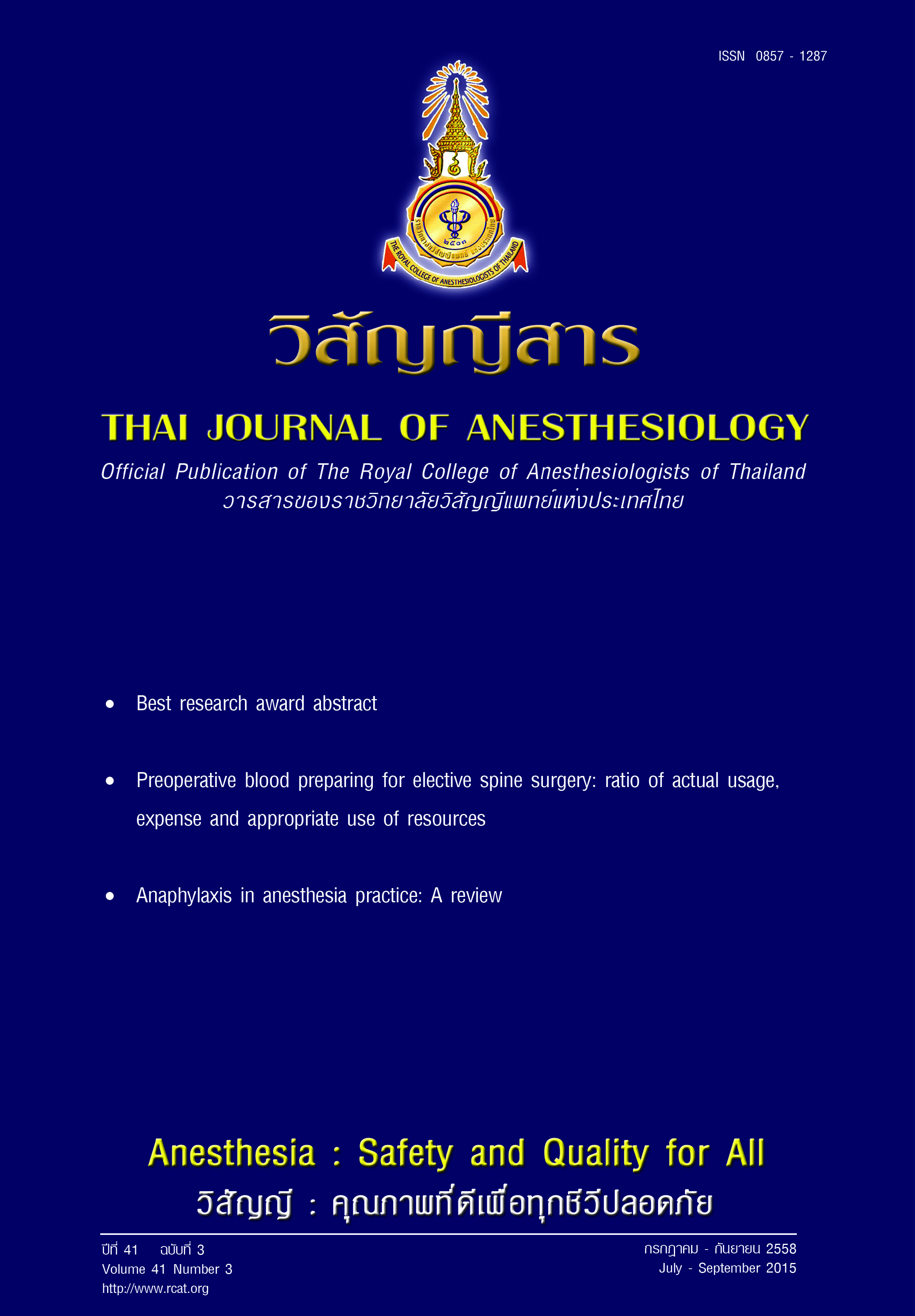Submental Orotracheal Intubation in Maxillofacial Surgery
Main Article Content
Abstract
Background: Airway management in patients undergoing maxillofacial surgery, the surgeon needs to control the dental occlusion and nasal pyramid assessment. For these reasons, oral and nasal endotracheal intubations are contraindicated. Tracheostomy often has perioperative and postoperative complications. Submental orotracheal intubation is now a recognized method of airway control during maxillofacial surgery. It provides a secure airway and does not interfere with maxillomandibular fixation or access to naso- orbito-ethmoid fractures.
Method: This is a nine years retrospective review of patients who underwent submental orotracheal intubation in maxillofacial surgery. The following variables were recorded: patient gender and age, preoperative diagnosis, and complications associated with intubation technique.
Results: Submental orotracheal intubation was performed 41 times on 41 patients. In all the patients, the submental orotracheal intubation permitted simultaneous reduction and fixation of all fractures. There were only two intra-operative complications, when the pilot balloon was leakaged and loosening of the connector after re-attachment. No postoperative complications was reported
Conclusion: Submental orotracheal intubation is a simple technique associated with a low morbidity. It is an alternative to tracheostomy. For operative airway control in major maxillofacial traumas.
การนำท่อหายใจผ่านทางใต้คางในผู้ป่วยที่มาทำผ่าตัดกระดูกใบหน้าหัก
บทนำ: การจัดการทางเดินหายใจในผู้ป่วยที่มาทำผ่าตัดกระดูกใบหน้าหัก ในระหว่างการผ่าตัด ศัลยแพทย์ ต้องการดูการสบฟันและทำหัตถการบริเวณจมูก ด้วยเหตุนี้ทำให้ไม่สามารถใส่ท่อหายใจทางปากและจมูกได้ ดังนั้นในผู้ป่วยที่มีกระดูกใบหน้าหักอย่างรุนแรง จึงพิจารณาเจาะคอ แต่การเจาะคอมักพบภาวะแทรกซ้อนทั้ง ระหว่างผ่าตัดและหลังผ่าตัดได้บ่อย ในปัจจุบันการนำท่อหายใจผ่านทางใต้คางเป็นวิธีที่นำมาใช้ได้ผลดี เนื่องจาก สามารถจัดการทางเดินหายใจได้โดยไม่ขัดขวางการทำผ่าตัดกระดูกใบหน้าและขากรรไกร หรือการทำหัตถการ บริเวณจมูก
วิธีการศึกษา: การศึกษานี้เป็นการศึกษาแบบทบทวนย้อนหลัง ในผู้ป่วยที่ได้รับการนำท่อช่วยหายใจ ผ่านทางใต้คางเมื่อมาทำการผ่าตัดกระดูกใบหน้าหัก โดยเก็บข้อมูลเรื่อง เพศ อายุ การวินิจฉัยก่อนผ่าตัด ภาวะ แทรกซ้อนที่สัมพันธ์กับการนำท่อหายใจผ่านทางใต้คาง
ผลการศึกษา: ได้ทำการนำท่อหายใจผ่านทางใต้คาง ทั้งหมด 41 ครั้ง ในผู้ป่วย 41 คน ผู้ป่วยทั้งหมดสามารถทำผ่าตัดกระดูกใบหน้าหักได้สำเร็จ โดยมีภาวะแทรกซ้อน จากการนำท่อช่วยหายใจผ่านทางใต้คางที่เกิดขึ้นระหว่างผ่าตัด 2 ราย คือมีการรั่วของ pilot balloon และข้อต่อ ปลายท่อช่วยหายใจหลวมเมื่อต่อกลับ ไม่พบภาวะแทรกซ้อนหลังผ่าตัด
สรุป: การนำท่อช่วยหายใจผ่านทาง ใต้คาง เป็นวิธีที่ง่ายและพบภาวะแทรกซ้อนน้อย จึงเป็นทางเลือกหนึ่งแทนการเจาะคอ ในการดูแลทางเดินหายใจ ในผู้ป่วยที่มาทำผ่าตัดกระดูกใบหน้าหัก


